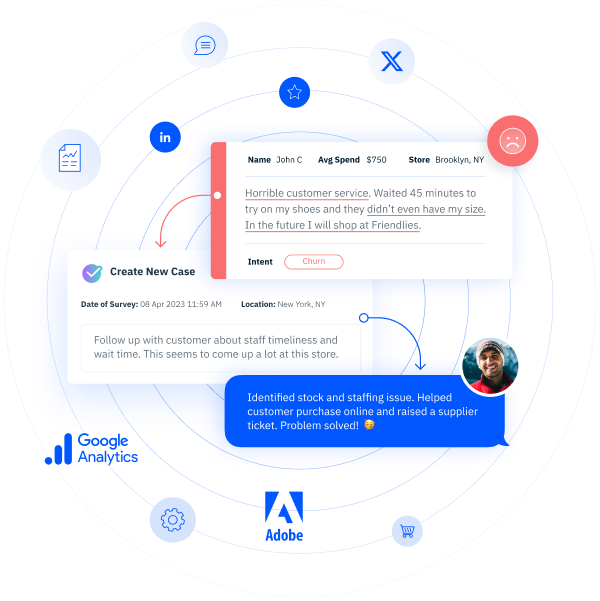How do companies expanding into international markets maintain their focus on putting the customer at the heart of the business across widely different markets? In the second part of my blog, I share some of the key lessons I have learned from over a decade spent working with leading global brands. Below are some critical tips for implementing a successful global Customer Experience Management (CEM) programme in any geography that will help your brand to ensure global consistency while addressing local customer needs.
1. Engage staff
In some markets the opportunity for learning from customer feedback is a new (and perhaps not entirely trusted) experience. Employees need to understand from the beginning what the CEM programme represents and how it can help to improve the customer experience and drive customer loyalty and advocacy. It is essential that the business is transparent about its expectations for the programme, how it will be used and the benefits it will deliver. In turn, you will have highly engaged employees, which have been proven to dramatically improve the customer experience.
2. Interpret feedback in the relevant context
Insights must be locally grounded in order to be meaningful. Far too often, global CEM programmes are set up centrally and key local components are missed, leading to inaccurate assumptions. For example, programmes are often designed to look at feedback in relation to weekends versus weekdays; however, in many places in the world, the ‘weekend’ is actually Friday/Saturday – or, in some places, Thursday/Friday. If your programme auto-defines ‘weekends’ and does not adjust for different market definitions, the insights generated will be deeply flawed.
Markets – at regional or even city level – can also vary dramatically within countries. This focus on market relevancy is core to Empathica’s (A Mindshare Technologies Company) engagement in global CEM, forming a key part of what we deliver to our clients’ global programmes.
3. Target opportunities that most impact on your customers
An effective CEM programme will incorporate a local action-planning tool that focuses effort on the areas that mean the most to your local customers. Empathica works to assure these focus areas are analytically derived, experience honed and strategically relevant. And once local managers know how they are currently performing on those key focus areas, they will want to know how to improve. Social sharing of best practices that work within your business – within your market – is a huge benefit to rapidly improving performance. Offering a tool that assists managers to see how others have effectively overcome challenges and removed barriers to improve performance is an invaluable component to driving customer experience consistency across locations.
4. Engage with customers
Typically, 80% of your customers are actually having pretty good experiences – and often your staff are making a positive difference. The problem is that staff rarely hear about those great experiences. Customer WOWs are an important part of an effective CEM programme. It is critical to make it easy for your customers to share those great moments – and share those comments directly with your store/restaurant teams. That recognition of great work supports your teams’ continued positive engagement with customers, your brand and the CEM programme.
When your customers say they had a great experience and are highly likely to recommend your brand, Empathica makes it easy for them to do exactly that with Social Sharing, a unique, patented social media advocacy platform allows your customers to broadcast their good experience to their social media networks. And the good news travels fast! Social Sharing has delivered over 1.5 million brand recommendations to over 180 million potential customers in the past three years.
5. Celebrate success
Employees will do what gets measured, but they will repeat what gets rewarded. Including opportunities to recognise and reward engagement and establishing a positive cycle of engagement early on brings huge benefits, including building trust within the business. Celebrating performance lets teams know that their efforts are recognised and encourages repeating that good behaviour.
Well-designed global CEM programmes can add enormous value to businesses that seek to develop their international profile and can deliver strong rewards in customer loyalty and advocacy. And those two outcomes drive measurably improved business performance in sales, increased average spend and more frequent return. The combination of improved business performance and enhanced customer experience helps businesses thrive in a highly competitive global market.
